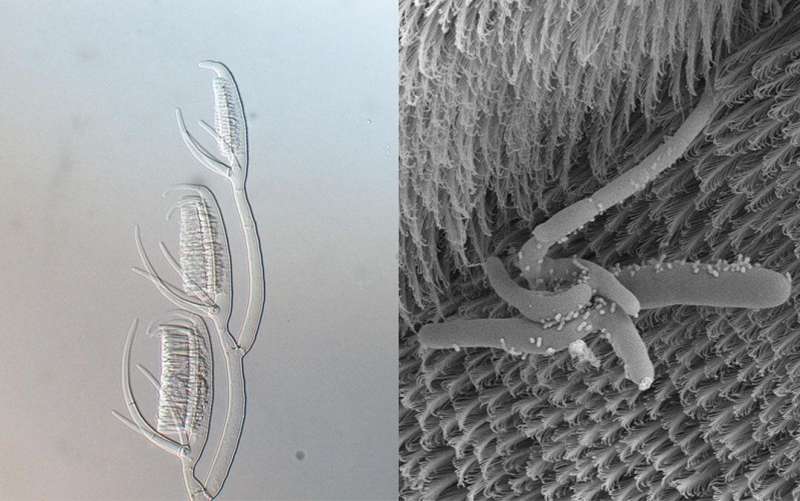Fungus living inside cave crickets reveals fungal evolution steps

Sometimes, the answers to questions about evolution can be found in the strangest of places. For example, researchers from Japan have now discovered that a fungus found in cave cricket feces can help to shine a light on fungal evolution.
In a study published last month in Mycologia, a research group led by the University of Tsukuba has revealed that a previously undescribed fungus could provide the key to understanding how fungi in the group Kickxellomycotina evolved.
Fungi are a highly diverse group of organisms that inhabit many different habitats and ecological niches. The subphylum Kickxellomycotina is no exception: these fungi can range from living as saprobes (fungi that feed on decaying wood, leaves, and other organic matter) on soil or dung, to inhabiting the guts of arthropods. However, the evolutionary transition between these life cycles is unclear.
"During a survey of fungi that underwent early evolutionary divergence, we found a new fungus that grows on cave cricket feces," says senior author of the study, Professor Yousuke Degawa. "On the basis of its morphology and ecology, we concluded that this fungus is a member of the Kickxellales."
The Kickxellales is a group within the Kickxellomycotina, and up until now these fungi were considered to be mostly saprobes. The researchers found that the new fungus, named Unguispora rhaphidophoridarum, represented a new genus. However, it did not grow under the same conditions as other fungi in the Kickxellales, and instead demonstrated a new life cycle for this group—one where the fungus inhabits the gut of its host, and is also dependent on its host for survival.
The researchers use the term "amphibious fungi" (not to be confused with aquatic hyphomycetes—a group of fungi that colonize decaying deciduous leaves in streams and rivers—which are also called amphibious fungi) to describe fungi like U. rhaphidophoridarum. This new genus has two life stages: one inside the host gut and the other outside, such as on feces and exuvia (the molted exoskeletons of arthropods). Most of the species in the gut-inhabiting group within the Kickxellomycotina are found in aquatic insects.
"Our findings suggest that the Kickxellomycotina evolved in association with the guts of animals, including arthropods," says Professor Degawa.
Although it is difficult to determine how ancestral fungi in the Kickxellomycotina lived, the results of this study offer a new way of looking at how some of them evolved to inhabit the guts of animals. Future investigations of fungi in this group that have life cycles associated with the animal gut will uncover the evolutionary stages between saprobes and gut-inhabiting fungi, as shown by Unguispora.
More information: Tomohiko Ri et al, A new genus Unguispora in Kickxellales shows an intermediate lifestyle between saprobic and gut-inhabiting fungi, Mycologia (2022). DOI: 10.1080/00275514.2022.2111052
Journal information: Mycologia
Provided by University of Tsukuba




















